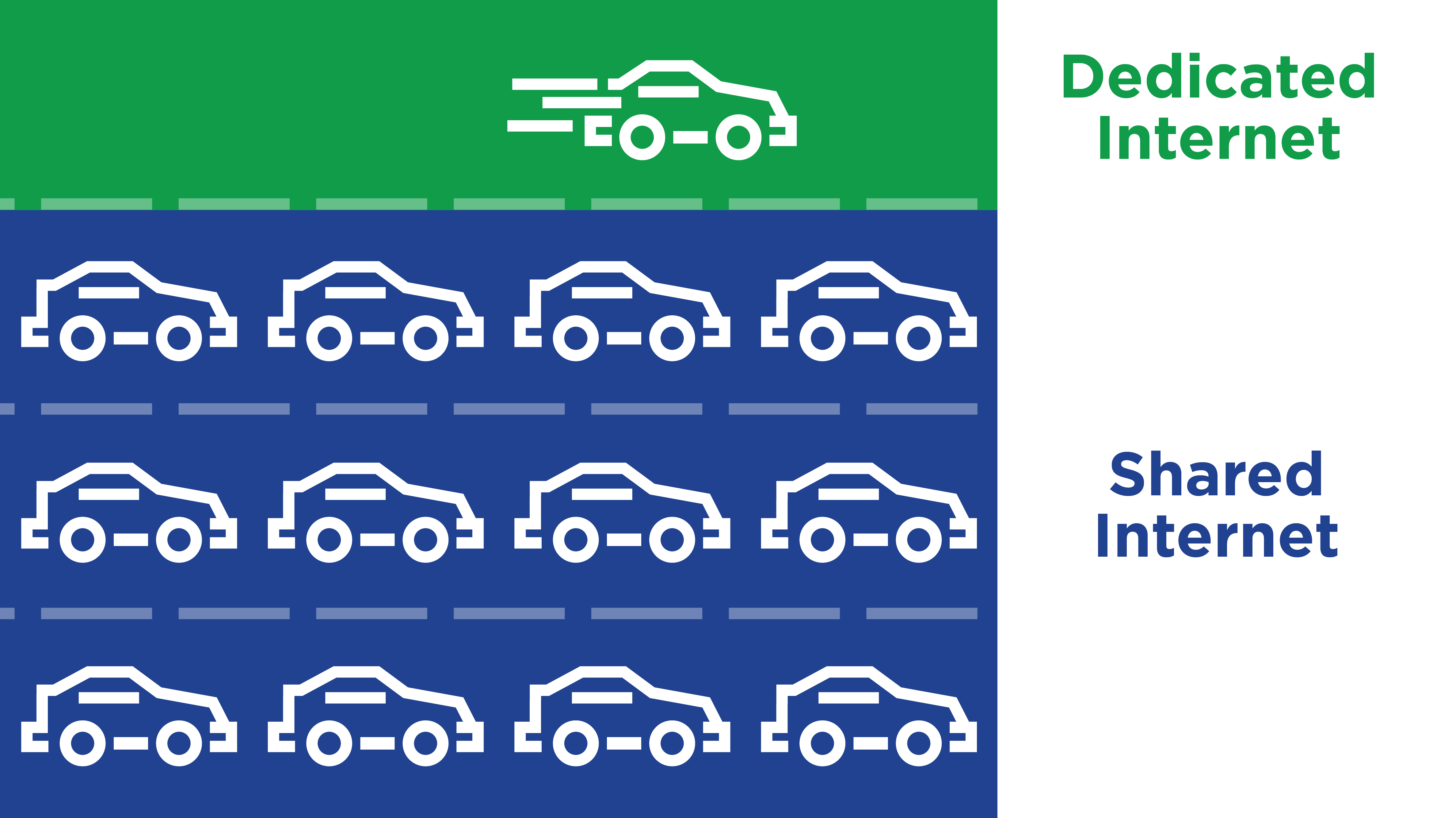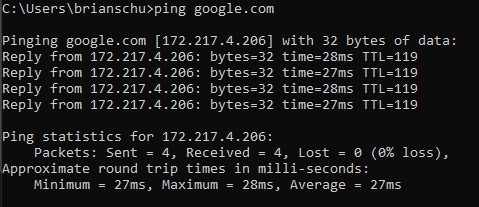Understand Your Internet Connection
By Brian Schumacher
Sales Engineer
Read Time: 5 minutes
When it comes to internet delivery, things can get confusing fast. One might say, “Well, internet is internet, right?” The short answer to that is yes, and no. Yes, in the fact that all connections give you a path to this giant, wonderful world full of information and countless cat videos – known as the internet. But there are many factors in how the internet is delivered, impacting your connection quality and speed.
Article Highlights
- Midco offers internet options to fit the needs of every business.
- A shared internet connection delivers relatively fast speeds but is impacted by the amount of traffic.
- A dedicated connection gives you your own personal lane to access the internet.
- There are four main delivery method options offered by Midco.
- You can test the latency of your connection.
Internet Solutions
Whatever type of business you have, there is an internet solution for you. At Midco, we offer a variety of options for every situation, need and circumstance, including coax (DOCSIS), fiber-to-the-premises (FTTP), fixed wireless and dedicated fiber. There are also advanced services available, but for now, we’re keeping it high-level and diving into internet delivery technology only.
The key to understanding the individual delivery methods is to first understand how they are grouped. So, let’s start with shared vs. dedicated delivery methods.
Shared vs. Dedicated
Let’s take a trip back a few decades to the 1990s. Grunge and fanny packs were in, neon leg warmers and mullets were on their way out, MTV® actually played music videos, and the most talked about commercial on TV featured three guys yelling “Wassup!” through intercoms to promote Budweiser®.
The internet was just making its way into the mainstream. In 1994, Vice President Al Gore gave a speech and referred to the internet as the information superhighway. This term is a great way to help us explain internet delivery types.
Time to put our imagination hats on! Let’s assume for a second that the internet is a series of roads, highways and interstates. The internet is exactly that – a lane or series of lanes that data travels on. The number of lanes, the speed limit and the quality of the road are determined by the delivery type.

- A shared internet connection is like a multi-lane highway. Speeds are relatively fast, and you can be in any of the three lanes. As long as traffic congestion is low, you get to go the speed limit – or over sometimes. (Shhh! Don’t tell anyone!) When rush hour hits, you may be able to maintain your speed, but traffic will inevitably slow down when everyone decides to make their way home and fill the lanes on the highway. The amount of traffic on the highway is directly related to the speed and quality of your drive. It can also be directly related to your current frustration level!
- A dedicated internet connection is like a new fourth lane. This lane is empty, and you are the only car allowed to drive on it. It’s a new construction, so the road is smooth – and fast. You get to drive the speed limit and go right to where you want, with no other cars slowing you down. You get your own turn lanes, your own entrance ramps and exit ramps, and it’s smooth sailing all the way to your destination. (If this only existed on our daily commutes, right?)
Enjoy a connection that keeps your business up and running. Midco owns, operates, engineers and monitors every inch of our network 24/7 to anticipate and resolve potential issues before they happen.
See how we’re taking care of business – specifically your business – at our Network Operations Center.
Internet Delivered
Hopefully at this point, you have a basic understanding of the difference between shared and dedicated internet. Now, let’s look at the different internet delivery methods and how they affect your connection.
-
Coax (commonly referred to as DOCSIS)
This is a shared delivery type that goes over a copper coaxial line into the premises. It’s typically terminated with a cable modem, and while your download speeds can be quite fast, the upload speeds are a fraction of the download speeds. This is primarily used in residential homes and small businesses, depending on their needs.
Learn more about coax internet -
FTTP (Fiber-to-the-Premises)
This delivery method is very similar to coax as it’s a shared service. However, FTTP is delivered over fiber and goes directly to your business, providing a more reliable connection. You may hear terms like EPON (Ethernet passive optical network) or GPON (gigabit Ethernet passive optical network) to describe FTTP services. This delivery method allows us to bring customers symetrical download and upload speeds. It’s primarily used in residential and small to medium business environments. FTTP will more than likely replace coax in the coming years.
Learn more about fiber internet -
Dedicated Fiber
This is a dedicated delivery type that goes over a fiber medium and terminates to a network device on the premises that accepts our fiber directly into it. This delivery method is the most reliable and offers symmetrical download and upload speeds with very low latency and jitter. (Don’t worry, I will define latency and jitter in just a bit.) Midco also has a massive amount of redundancy built into our fiber network. This is typically used for corporate environments that need the reliability of the circuit provided, 24/7 monitoring services, our 99.999% uptime, and the four-hour maximum downtime window we can offer with this delivery method. Dedicated fiber also allows us to provide additional advanced services that may not work as well (or at all) over other delivery methods. With all these benefits, this delivery method is also the most expensive option.
Learn more about dedicated fiber internet -
Fixed Wireless
This is a shared delivery type that is delivered over fiber, typically to a wireless tower. Midco installs equipment on the top of a water tower, grain elevator or other tall structure that is connected to the Midco Network. Then, an antenna on your business points directly to that equipment (not at the sky) and delivers high-speed internet using point-to-multi-point signals.This is commonly used in rural areas where typical underground internet lines do not exist due to the vast distance between locations. Speeds are not as fast as coax, FTTP or fiber, but fixed wireless does deliver surprisingly low latency and quality internet.
Learn more about fixed wireless internet
Extra Credit
I believe it’s also necessary to define the terms latency and jitter to fully understand the difference in Midco’s internet delivery products.
Latency: The time it takes for a data packet to reach its destination and return to the sender. This is measured in milliseconds and is a very important part of delivering quality internet service. Good latency is directly related to reliability and quality.
Jitter: The amount of latency inconsistency over a network. This is also measured in milliseconds and is one of the more important factors in delivering audio and video services – such as hosted voice over internet protocol (VoIP) phone.
Here’s a cool visual exercise to see latency and jitter on your own computer.
- Click on your Start menu.
- When it comes up, type cmd.
- You’ll see an app come up called command prompt.
- Click to bring up a black command prompt window.
- In the window type, ping google.com and press enter.
Take a look at the results. You will see a response similar to the image below.

Notice there are four replies. This means that four data packets were sent to Google.com. If you look closer at each reply, you’ll see a time in milliseconds. That is the latency, which is the time it took for each respective packet to go to Google.com and return to your computer. Jitter is the varying times in which it responds. In the case above, jitter is pretty consistent as the ping responses only vary by one millisecond. Pretty cool, don’t you think?
I suppose I should wrap this up, as I have a meeting with the guy who invented the progress bar during the dial-up internet era. He should be here in one hour and 27 minutes.
--edit-- I guess he’s stuck in traffic and his ETA is now four hours and 32 minutes.
--edit-- He’s making much better progress than I thought. He should be here in 17 minutes.
--edit -- Apparently it will now take him five days. 😊

Brian Schumacher is a Sales Engineer at Midco. Brian has 11 years of network engineering experience and four years of working in business management and project management. Brian provides expertise for all technical aspects of the sales process, which includes analyzing the technical needs of business customers and developing a strategy to meet those needs through engineering design.

Brian Schumacher is a Sales Engineer at Midco. Brian has 11 years of network engineering experience and four years of working in business management and project management. Brian provides expertise for all technical aspects of the sales process, which includes analyzing the technical needs of business customers and developing a strategy to meet those needs through engineering design.
